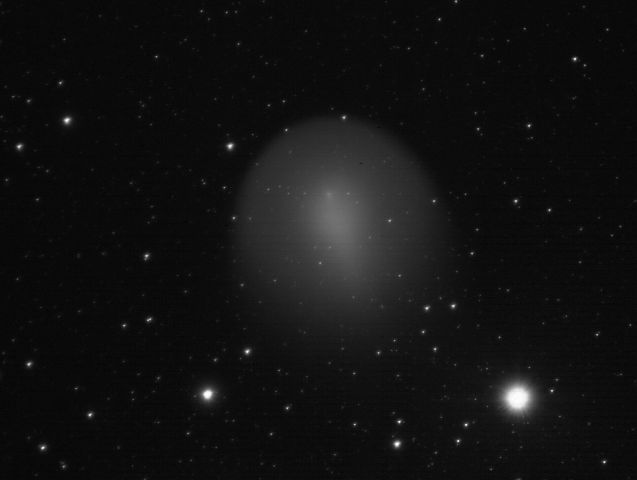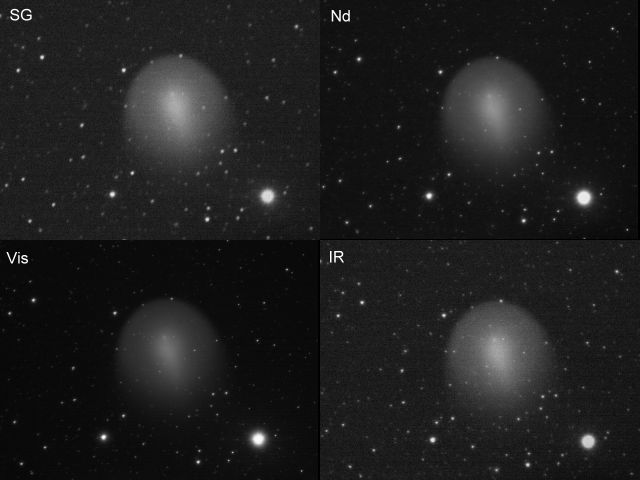

Comet 17P/Holmes was discovered by Edwin Holmes on 6th November 1892 when the comet had an outburst similar to the one in 2007. It has a period of 6.9 years and was observed on its returns in 1899 and 1906 but was then lost until 1964 but has been observed at every return since. Older designations of this comet were 1892 V1, 1892 III, and 1892f. Its present orbit never brings it within the orbit of Mars or beyond the orbit of Jupiter. However the aphelion is only 0.02 AU inside Jupiter's mean distance from the Sun, so the orbit is subject to considerable perturbation by Jupiter, which probably explains the loss of the comet between 1906 and 1964.
Between 23rd and 25th of October 2007, Comet Holmes brightened from a magnitude of 17 to 2.8, turning it from a difficult telescopic object to one visible to the naked eye (even in my light-polluted skies). Sadly I was unable to image it at that stage due to ill health, and it was 16th November before I was fit enough and the skies were clear enough to get this image by which time the coma was the largest object in the solar system, albeit a very diffuse one. The comet was close to opposition, so any tail was directed away from us so we could not see it. The bright star is Mirphak, α-Persei, (magnitude 1.8).

|
Date and Time: 16th November 2007 21:55 UT Camera: Atik 1-HS Telescope: 135 mm SLR lens Capture: K3CCDTools. High gamma, 15", 46% gain, 32 frames (+ 10 darks) Processing: K3CCDTools. 30 frames, histogram 20-233. |
|

|
I experimented by taking images through various filters and here are the results. SG = Orion broadband SkyGlow Nd = Neodymium Vis = IR block IR = commercial IR pass (nm > 685) Camera: Atik 1-HS Telescope: 135 mm SLR lens Capture: K3CCDTools. High gamma, 15", gain as appropriate, 32 frames (+ 10 darks) Processing: K3CCDTools. 30 frames, histogram as required. |
|
Home Back to This and That